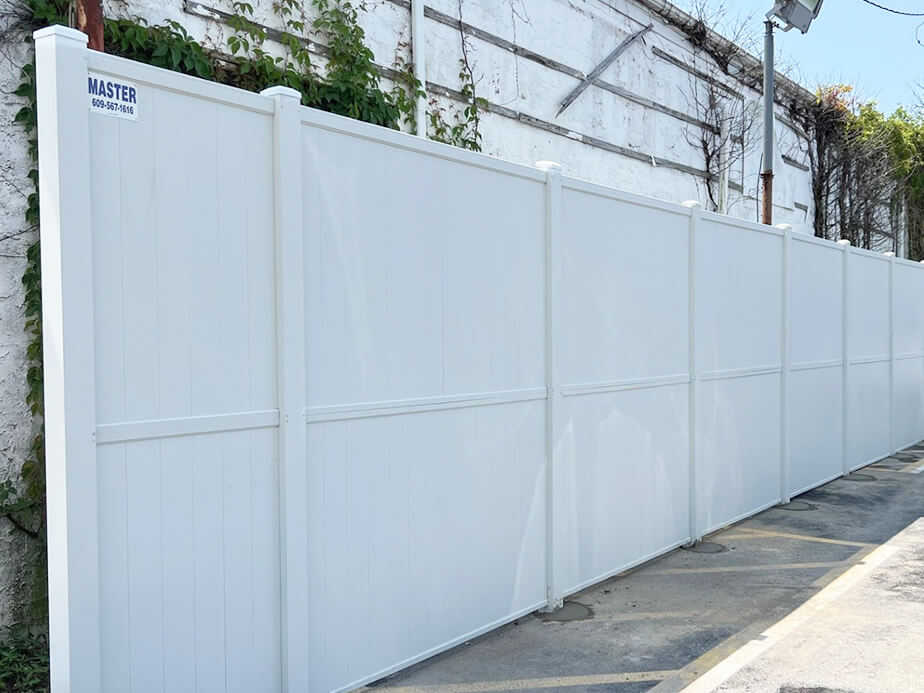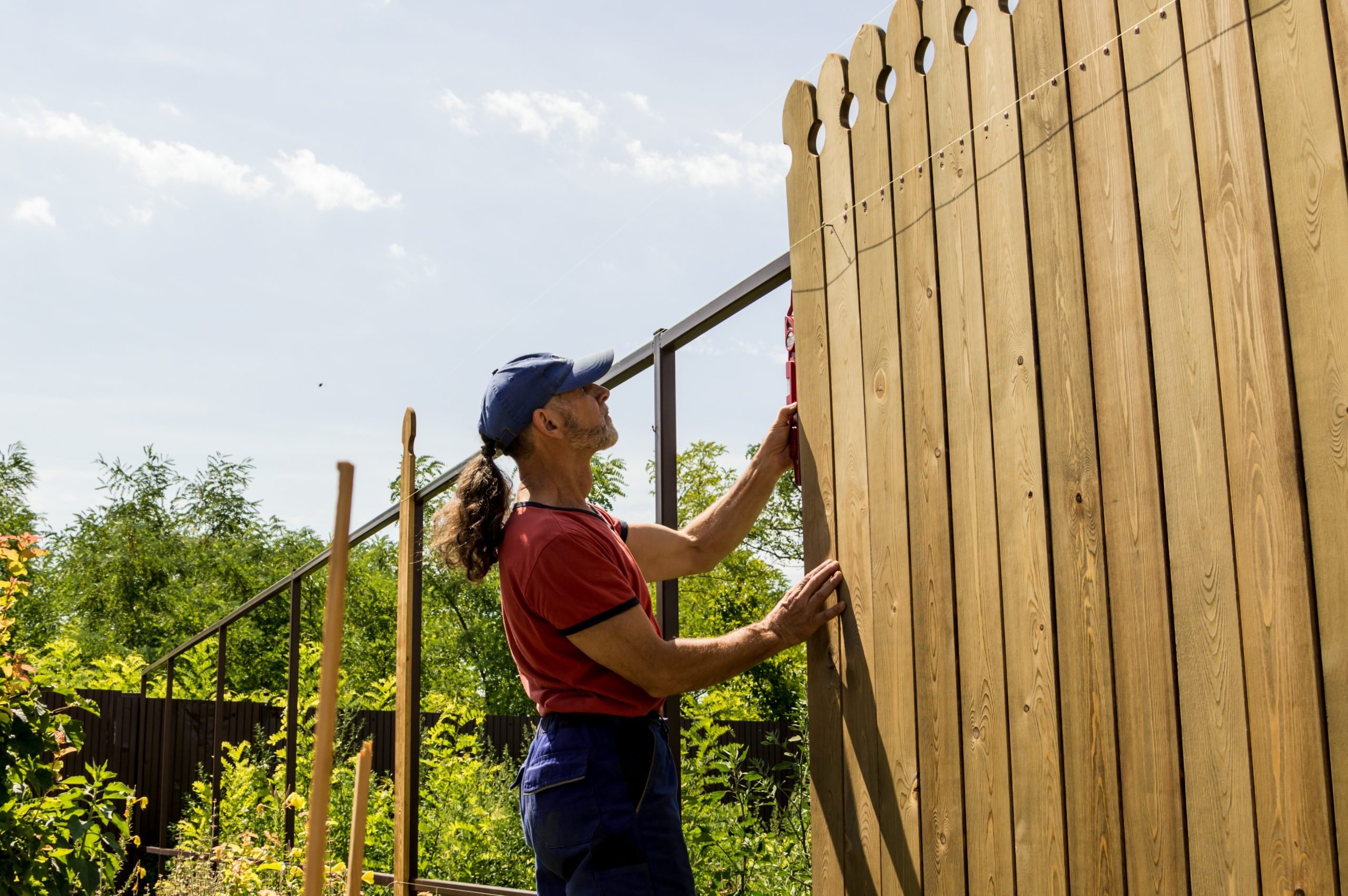Things to Ask When Hiring a Fence Contractor for Your Home
Things to Ask When Hiring a Fence Contractor for Your Home
Blog Article
Just How to Determine Typical Concerns That Call For Immediate Fence Repair Service
When it pertains to keeping your fence, it is vital to spot concerns prior to they come to be larger issues. On a regular basis looking for indicators of rotting wood, leaning panels, or rust can save you money and time over time. You may not understand just how weather and parasites can compromise your fence's stability. Let's check out the typical indicators that show your fencing needs immediate attention, so you can maintain your residential property safe and secure and looking its ideal.
Indications of Rotting Wood in Wooden Fences
Have you noticed your wood fence looking a bit shabby? It may be time to check for indicators of deteriorating timber if so. First, analyze the base of the messages and panels for soft spots. That's a clear indication of rot if you push on the wood and it feels spongy or falls apart. Next off, seek staining or dark spots on the timber-- these frequently signal dampness damages. Take note of any kind of peeling off paint or finish, as this can subject the wood to further degeneration. Additionally, a pungent, stuffy smell can suggest fungal growth. Don't fail to remember to check links and joints; if they're loose or breaking down, the timber beneath is likely compromised. By capturing these indications early, you can avoid more substantial damages and maintain your fence standing strong. Routine maintenance is vital to prolonging the life of your wood fence.
Leaning or Tilting Fencing Panels
If you've seen your fencing panels leaning or tilting, it's essential to comprehend what triggered it. This concern could indicate underlying structural damage that needs your focus. Let's explore the typical causes and the repair service options offered to get your fence back fit.

Sources Of Leaning Panels
When you see your fence panels tilting or leaning, it's frequently a sign of underlying concerns that need resolving. One typical cause is poor drainage; extreme water can wear down the soil around the fencing posts, deteriorating their assistance. Another wrongdoer can be strong winds or storms that push versus the panels, especially if they're not effectively secured. Additionally, the natural settling of soil gradually can cause articles to change, resulting in a tilt. Bugs, like termites, can jeopardize the integrity of wooden panels, triggering them to lean. Finally, poor setup methods might lead to panels not being securely established, leaving them susceptible to leaning under pressure. Address these issues quickly to maintain your fencing's honesty.
Indications of Structural Damages
Seeing leaning or tilting fencing panels can be worrying, as these problems frequently show structural damages that needs prompt interest. When your fencing begins to lean, it may signal that the articles are changing or that the soil around them has actually worn down. Pay attention to gaps between panels or posts, as these can likewise recommend instability. deck builder. Furthermore, check for fractures or splintering in the timber, which can deteriorate the overall framework. If you discover rust or rust on metal parts, it can jeopardize the stability of the fencing. Keep in mind, ignoring these indicators can cause more serious damages down the line, so it's important to examine the situation quickly and act before it gets worse
Fixing Options Available

Corrosion and Corrosion in Metal Fences
If you own a metal fencing, you could discover corrosion and rust sneaking in with time, specifically if it's revealed to moisture. These concerns not just impact the look of your fence however can also compromise its architectural stability. To recognize rust, seek reddish-brown areas or patches, which show the metal is oxidizing. Deterioration can spread out quickly if left unattended, compromising the fencing and leading to expensive repairs.To take on rust and deterioration, you ought to cleanse the influenced locations with a wire brush and use a rust-inhibiting guide. When the guide dries out, take into consideration repainting the fencing with a weather-resistant paint to safeguard it better. Normal maintenance, such as examining for indicators of rust and touching up paint as required, will aid prolong your fence's life-span. Dealing with these concerns immediately guarantees your steel fencing remains solid and aesthetically appealing for several years to come.
Splits and Splits in Plastic Fence

Root Causes Of Plastic Damage
Plastic fencing is preferred for its durability, yet it can still struggle with fractures and splits because of numerous aspects. One major reason is severe temperature changes. When vinyl broadens in the warm and contracts in the cool, it can compromise the material in time. Furthermore, exposure to severe sunshine can bring about UV destruction, making the plastic breakable. Physical effects, like heavy branches or unintended collisions, can likewise produce cracks. Poor installment or using low-quality materials can intensify these concerns. Age plays a duty; older vinyl fencing is more prone to damage. Normal examinations can help you identify these factors before they cause considerable issues. Take proactive steps to ensure your fencing continues to be undamaged and solid.
Repairing Cracks Successfully
Fractures and divides in your plastic fence can be concerning, resolving them promptly can prevent more damage and maintain the fencing's look. Evaluate the dimension of the split. For small splits, a vinyl repair set frequently consists of adhesive that can bond the edges, providing a seamless solution. Clean the area extensively prior to applying the sticky, guaranteeing it adheres appropriately. For larger divides, you could require to use a plastic patch. Cut the spot to dimension, use glue around the sides, and press it securely onto the split. Enable it to treat based on the manufacturer's guidelines. Routine maintenance and fast repair services can expand your fence's lifespan, maintaining it looking great for several years ahead.
Loosened or Missing Fencing Articles
Loosened or absent fencing messages can undermine the stability of your entire fencing framework. If you observe any kind of articles leaning or wobbling, it's vital to deal with the issue promptly. Look for any signs of activity, as this can result in additional damage gradually. You can quickly examine the issue by giving each post a mild shake-- if it feels unstable, it's time to take action.For missing messages, you'll need to replace them as soon as possible to maintain your fencing's stability. When you set up brand-new messages, make sure they're safely secured in the ground with concrete or gravel for included stability. If a message hangs, tighten it by adding added assistance or driving it deeper into the ground.Ignoring these issues can cause larger issues, like spaces in your fence or even total collapse. So, watch on your messages and remain proactive regarding repair work!
Damage From Weather Condition and Natural Environment
Weather and all-natural elements can damage your fence, leading to numerous kinds of damage that call for prompt interest. Hefty rainfall can cause wood to rot, making it unpredictable and weak. Snow buildup may flex or damage panels, while strong winds can root out fencing blog posts or cause areas to lean.If you discover cracks or splintering in wooden fencings, it's a sign of drying as a result of intense sun exposure. Meanwhile, metal fences can corrosion if protective finishings subside, especially in moist or coastal areas.Inspect your fencing consistently after storms or severe weather condition to catch any kind of damage early. Addressing these concerns swiftly can save you from you could check here costly fixings down the line. Do not wait until a small problem becomes a major one; remain aggressive and keep your surround top shape to maintain both functionality and visual allure.
Bug Invasion and Termite Damage
When you discover indicators of insect problem or termite damages, it's necessary to act rapidly to stop more damage. Seek mud tubes along your fencing or hollow-sounding timber, as these indicate termites go to work. You might also see tiny holes or frass, which is basics termite droppings appearing like sawdust. If you spot any of these indicators, it's time to analyze the damage.Don' t wait until it's also late; insects can compromise your fencing's honesty. Evaluate the surrounding location for beetles or ants, as they might be adding to the trouble. If you believe a problem, consider calling a parasite control specialist to validate and deal with the issue.Repairing or replacing affected sections of your fencing immediately not just recovers its strength yet also prevents bugs from spreading out better. Remain alert to maintain your home pest-free and safe and secure.
Often Asked Inquiries
How Frequently Should I Inspect My Fence for Damages?
You must evaluate your fence at least two times a year, preferably throughout spring and fall. Normal checks help you identify damages early, conserving you money and time on repairs while keeping your residential or commercial property's appearance and safety and security.
Can I Repair a Fencing Myself or Hire a Professional?
If you have the right tools and skills, you can definitely repair a fence on your own. Working with a professional assurances high quality work and saves you time, specifically for complicated fixings or substantial damage.
What Equipment Are Required for Basic Fencing Repair Work?
For standard fencing repairs, you'll need tools like a hammer, screwdriver, pliers, a saw, a level, and determining tape. deck builder. Relying on the fixing, you may also need nails, screws, or replacement boards
Just How Much Does Fence Repair Work Usually Expense?
Fencing repair service costs differ widely, yet you can anticipate to pay in between $200 and $1,500 depending on materials, labor, and degree of damages. It's clever to get multiple quotes for the ideal offer.
When Is the very best Time of Year for Fencing Repairs?
The most effective time for fencing fixings is during light climate, typically in springtime or very early autumn. You'll prevent extreme temperature levels, making it less complicated to work and making sure the materials set effectively for lasting resilience (deck builder). Noticing leaning or turning fence panels can be startling, as these concerns commonly suggest structural damages that requires immediate attention. Loose or missing fence articles can threaten the stability of your entire fence structure. Snow buildup might bend or damage panels, while solid winds can root out fence messages or trigger areas to lean.If you notice splits or splintering in wooden fencings, it's a sign of drying out due to extreme sunlight direct exposure. Steel fencings can rust if safety finishes wear off, specifically in humid or seaside areas.Inspect your fencing routinely after storms or severe weather condition to capture any type of damage early. Fencing repair service expenses differ commonly, yet you can expect to pay between $200 and $1,500 depending on products, labor, and degree of damages
Report this page